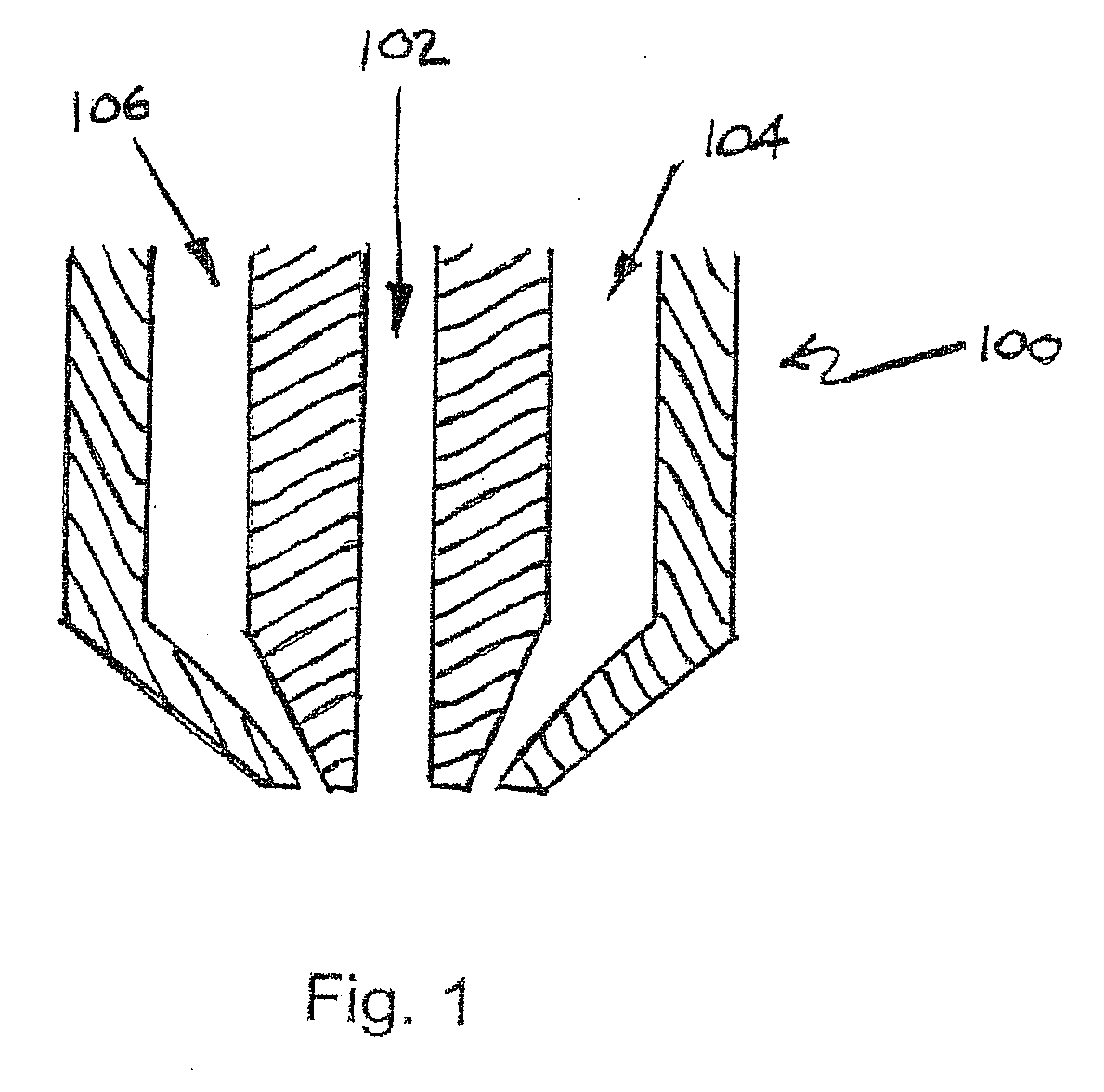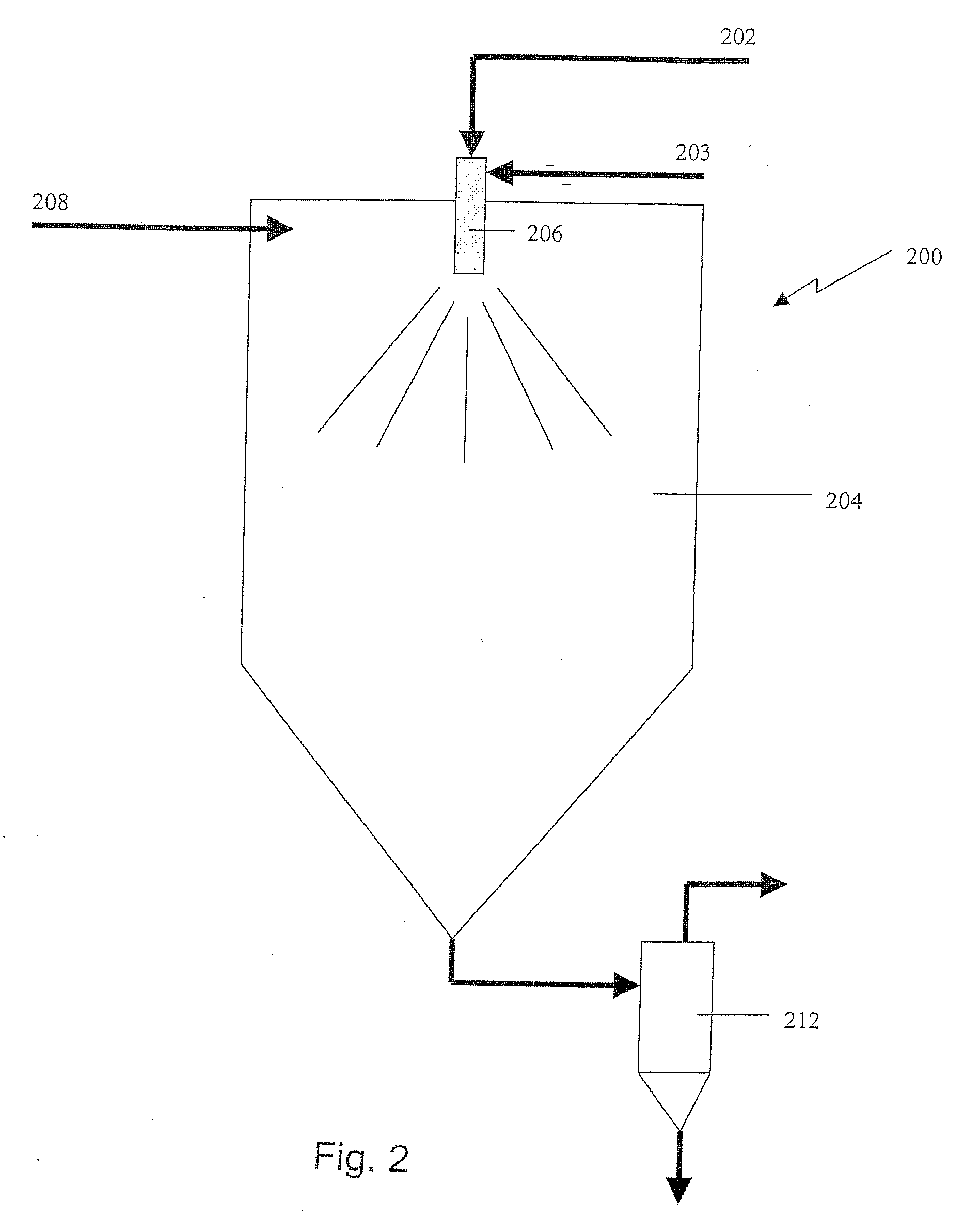Methods for the deposition of electrocatalyst particles
a technology of electrocatalyst particles and electrocatalysts, which is applied in the field of electrocatalyst particles deposition methods, can solve the problems of limited total power, poor rechargeability/cycle life, and limited size reduction of portable electronic devices
- Summary
- Abstract
- Description
- Claims
- Application Information
AI Technical Summary
Benefits of technology
Problems solved by technology
Method used
Image
Examples
examples
1. MnOx / C Composite Particles
[0366] Two groups of MnOx / C composite electrocatalyst examples were prepared according to the present invention. The first group, described in Table III, was prepared by ultrasonic aerosol generation and heating the aerosol in a hot-wall reactor (tubular furnace). The second group, described in Table IV, was prepared using a spray nozzle to generate an aerosol which was heated in a spray dryer. Air was used for the carrier gas for all examples.
TABLE IIIExperimental conditions for ultrasonically generated electrocatalystsAdditionalReactorPrecursorExampleMnSurfactantTempMnConcentrationNumberprecursor(wt. %)(° C.)(wt. %)(wt. %)19AKMnO4None40010519BMn nitrateNone35010520AKMnO4None35010520BKMnO4None35010523AKMnO40.01735010524AKMnO40.03435010527AMn nitrate0.04935010528BKMnO40.04930010528DKMnO40.04925010528EKMnO40.04920010529BMn nitrate / 0.012350105KMnO4
[0367]
TABLE IVExperimental conditions for spray nozzle generated electrocatalystsAdditionalReactorPrecurso...
PUM
| Property | Measurement | Unit |
|---|---|---|
| pressure | aaaaa | aaaaa |
| temperatures | aaaaa | aaaaa |
| temperatures | aaaaa | aaaaa |
Abstract
Description
Claims
Application Information
 Login to View More
Login to View More - R&D
- Intellectual Property
- Life Sciences
- Materials
- Tech Scout
- Unparalleled Data Quality
- Higher Quality Content
- 60% Fewer Hallucinations
Browse by: Latest US Patents, China's latest patents, Technical Efficacy Thesaurus, Application Domain, Technology Topic, Popular Technical Reports.
© 2025 PatSnap. All rights reserved.Legal|Privacy policy|Modern Slavery Act Transparency Statement|Sitemap|About US| Contact US: help@patsnap.com



